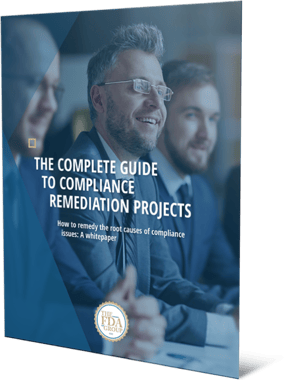In September 2018, FDA's CDER published and implemented a Manual of Policies and Procedures (MAPP) describing the Site Selection Model (SSM) used to prioritize manufacturing sites for routine CGMP surveillance inspections under the Agency's 'risk-based' approach.
As stated, FDA aims to use this model to make the most effective and efficient use of limited resources in an increasingly global manufacturing industry.
According to the Inspection MAPP, while FDA has officially used a 'risk-based' approach for prioritizing pharmaceutical drug manufacturing inspections since FY2005 (which was codified in 2012 with Section 510(h) of the FFDCA, replacing the prior statutory two-year inspection cycle), data from FDA's Inspection Data Dashboard reveals that many establishments are still inspected every two to three years.
This guide offers a clear and simple summary of the background surrounding these policies, what the stated risk factors are, and what FDA-regulated manufacturers can do to prepare based on the information available.
Origins & Overview of the Inspection MAPP
This Inspection MAPP joins several other efforts FDA has taken to improve its inspection process.
- Other recent initiatives include the Agency's amendment of the Pharmaceutical Good Manufacturing Practices Annex to the Mutual Recognition Agreement, under which the Agency recognizes inspections conducted by certain European authorities in an effort to reduce inspection duplication.
- The Agency also reorganized the office responsible for field activities so that FDA personnel, (including investigators) are assigned based on product rather than geographic area. In reference to the Inspection MAPP, Commissioner Scott Gottlieb has announced that FDA has updated its Inspection Classification Database in an effort to bring greater transparency to inspection outcomes.
The contents of the Inspection MAPP expand upon the Food and Drug Administration Safety and Innovation Act of 2012 (FDASIA).
Section 507 replaced the fixed minimum (biennial) inspection interval for domestic establishments with a new requirement that regulators inspect domestic and foreign drug establishments “in accordance with a risk-based schedule” that considers the establishments’ “known safety risks” and which are required to be based on the following factors:
|
Risk Factors for Generating a Site's "Risk Score"
The sixth clause above "any other criteria" is the basis for the additional risk factors presented in the Inspection MAPP that are used to generate a "risk score" for each site.
These risk factors include:
|
How Scoring Works
According to the Inspection MAPP, FDA will use these risk factors to develop a risk score for each establishment to prioritize inspections.
- The scoring of risk factors is based on empirical evidence gathered by FDA, the judgment of subject matter experts, or a combination of both.
Other Key Details
- The SSM will be applied equally to domestic and foreign establishments. The Agency states its goal is “to achieve parity in inspection frequency, meaning equal frequency for sites with equivalent risk, regardless of geography (foreign or domestic).”
- FDA’s Office of Surveillance will maintain and apply the SSM and generate a Site Surveillance Inspection List (SSIL). FDA’s Office of Regulatory Affairs is responsible for planning and conducting inspections based on the SSIL.
- Newly registered sites should expect to be inspected within 30 days after registering with FDA.
Types of Sites Excluded from Inspection Prioritization
Official Action Indicated (OAI) sites are removed from routine surveillance inspection planning, meaning that the re-inspection of OAI sites is determined as part of the Agency’s enforcement effort.
The following types of sites are also excluded from prioritization under the MAPP:
- Human drug compounding outsourcing sites registered under section 503B of the FDCA, (inspection schedules for these sites are established by a separate selection process)
- Medical gas sites
- Excipients (note: these may be inspected when deemed necessary)
- Drugs intended for use only in clinical trials (note: these may be inspected when deemed necessary)
Final Thoughts & Next Steps
While the Inspection MAPP offers greater transparency into FDA's pharmaceutical inspection process around the world, it's important to note the key areas that have been left open-ended and how they impact manufacturers' ability to prepare accordingly:
- The impact on inspection frequency. Although FDA has distanced itself from the biennial inspection cycle, many drug establishments continue to see FDA inspectors every two to three years. It's unclear whether the risk factors are a public statement of FDA’s existing policy or are part of a new or revised policy.
- How risk factors are weighted. The Agency does not explain how it weighs these risk factors, making it difficult to determine a facility's likelihood of inspection at any given time.
Given the information currently available, manufacturers can still determine whether particular occurrences or conditions at their facilities will be deemed a risk by regulators.
Companies subject to CGMP surveillance inspections should consider adjusting quality control scoring systems used internally to align with those factoring into the SSM in order to better predict conditions that FDA may deem high-risk. With an improved internal scoring system in place, resources can be better directed to higher-risk areas—ensuring inspection readiness while demonstrating adherence to a risk-based approach to quality throughout the organization.
Contact us to get started putting these enhancements in place throughout your impacted facilities with the help of the industry's most experienced quality and compliance professionals.
Related guides:
- How to Prepare for an FDA Inspection: 6 Quick Tips
- 5 Items to Stock in Your FDA Inspection War Room
- Foreign FDA Inspections: A Guide to FDA's Pre-Inspection Procedures
- What Happens During an FDA Inspection?


